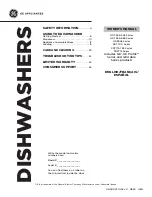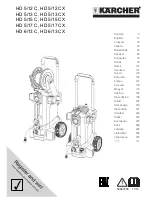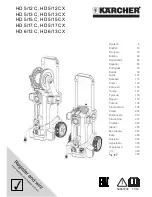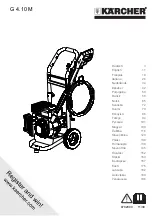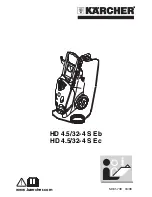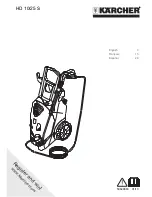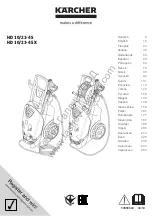
PAGE 20
FOR SERVICE TECHNICIAN’S USE ONLY
DO NOT REMOVE OR DESTROY
9.
If the preceding steps did not correct the
drain problem, replace the CCU.
Unplug washer or disconnect power.
Replace the CCU.
Reassemble all parts and panels.
Perform the “Quick Diagnostic Test”
on page 6 to verify repair.
Water Temperature Controls
3
Heating Element – Test #10
3
Temperature Sensor – Test #11
TEST #10: Heating Element
This test checks the heating element, wiring,
and CCU.
1.
Unplug washer or disconnect power.
2.
Remove top panel to access machine
electronics.
3.
Disconnect connector
HE2
from the CCU.
Refer to CCU diagram on page 13.
4.
Using an ohmmeter, measure the resistance
across pins 1 and 2 of connector
HE2
.
If the resistance is between 10-20
Ω
, the
heating element and wiring are good; go
to step 8.
If the resistance is open, go to step 5.
5.
Remove back panel to access the heating
element.
6.
Disconnect the wire connectors from the
heating element. See Figure 9, page 21.
7.
Using an ohmmeter, measure the
resistance across the two heating element
terminals.
If the resistance is between 10-20
Ω
, the
heating element is good; replace the lower
main harness.
If the resistance is open, replace the
heating element.
8.
If the preceding steps did not correct the
heating element problem, replace the CCU.
Unplug washer or disconnect power.
Replace the CCU.
Reassemble all parts and panels.
Perform the “Quick Diagnostic Test”
on page 6 to verify repair.
TEST #9: Flow Meter (Steam Model)
This test checks the electrical connections
to the flow meter and the flow meter itself.
1.
Perform the “Quick Diagnostic Test” on
page 6. If error code
F8E4
is generated, the
washer is detecting less than 0.1L of water
after 30 seconds of starting the test.
Go to step 2.
2.
Did the valve(s) turn on and was water
seen and heard entering the drum?
No, the valve(s) did not turn on. Go to
TEST #6: Water Inlet Valves on page 17.
Yes, the valve(s) turned on, but no water
entered the drum. Go to step 3.
Yes, the valve(s) turned on and water
entered the drum. Go to step 4.
3.
Verify that the hot and cold water inlet hoses
are properly connected to the washer and the
valves are turned on fully. Ensure the inlet hoses
are not kinked or inlet screens blocked.
4.
Unplug washer or disconnect power.
5.
Remove top panel to access machine
electronics.
6.
Visually check that connector
FM3
is
inserted all the way into the CCU. Refer
to CCU diagram on page 13.
If visual check passes, go to step 7.
If connector is not inserted properly,
reconnect
FM3
and repeat step 1.
7.
With an ohmmeter, check the harness
between the CCU (
FM3
) and flow meter
for continuity.
If there is continuity, go to step 8.
If there is no continuity, replace the flow
meter harness.
8.
With voltmeter set to
DC
, connect leads
to
FM3
pins 1 and 3. Run a wash cycle and
measure the flow meter voltage when the inlet
water valves open and water is entering the
washer. A nominal reading of approximately
200mV should be measured when water
is flowing through the flow meter (voltage
will vary depending on household water
pressure). No water flowing = 0V.
If voltage is present, the flow meter is
working properly. Go to step 9.
If voltage is not present when water is
entering the washer, replace the flow meter.
































